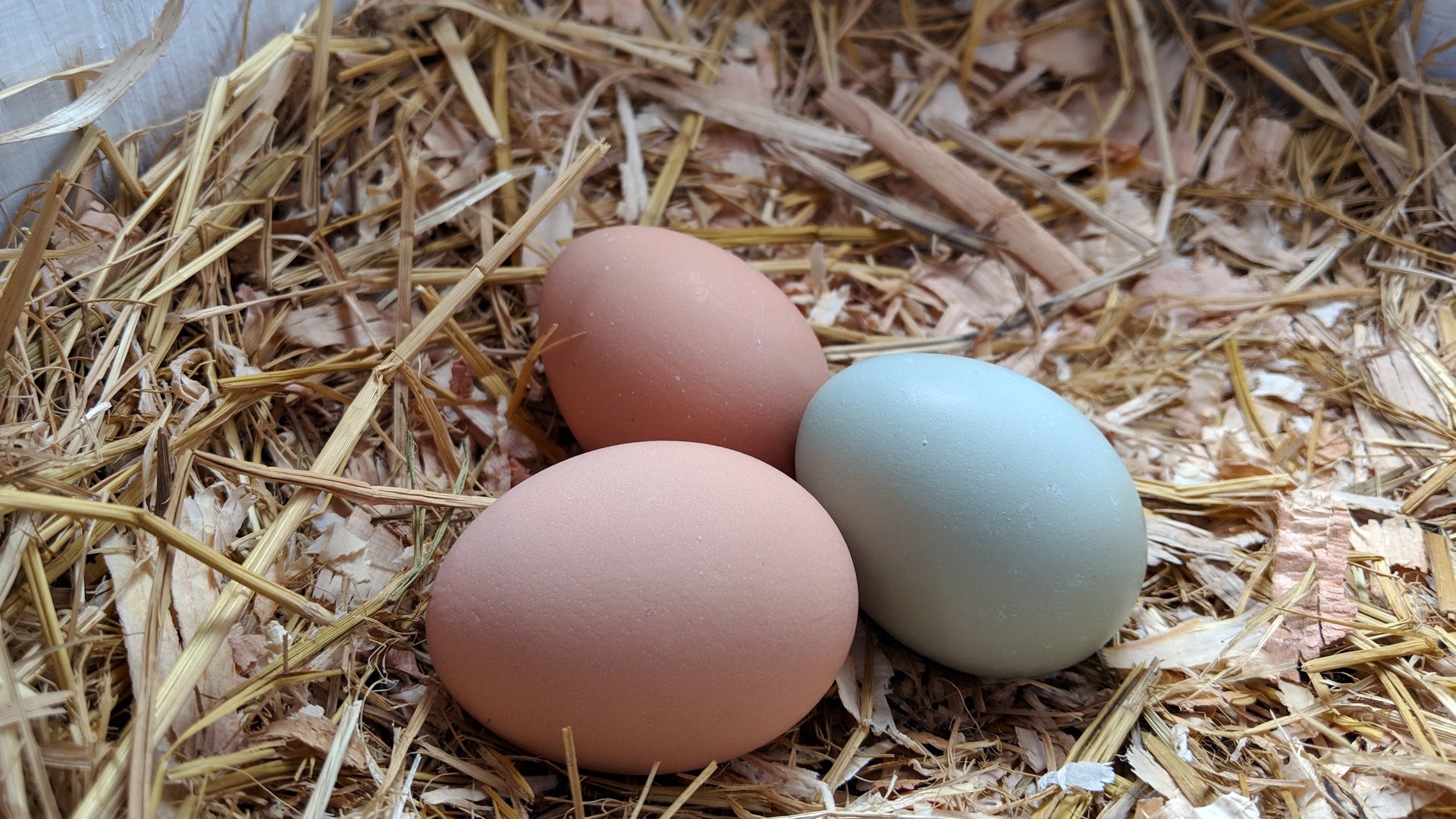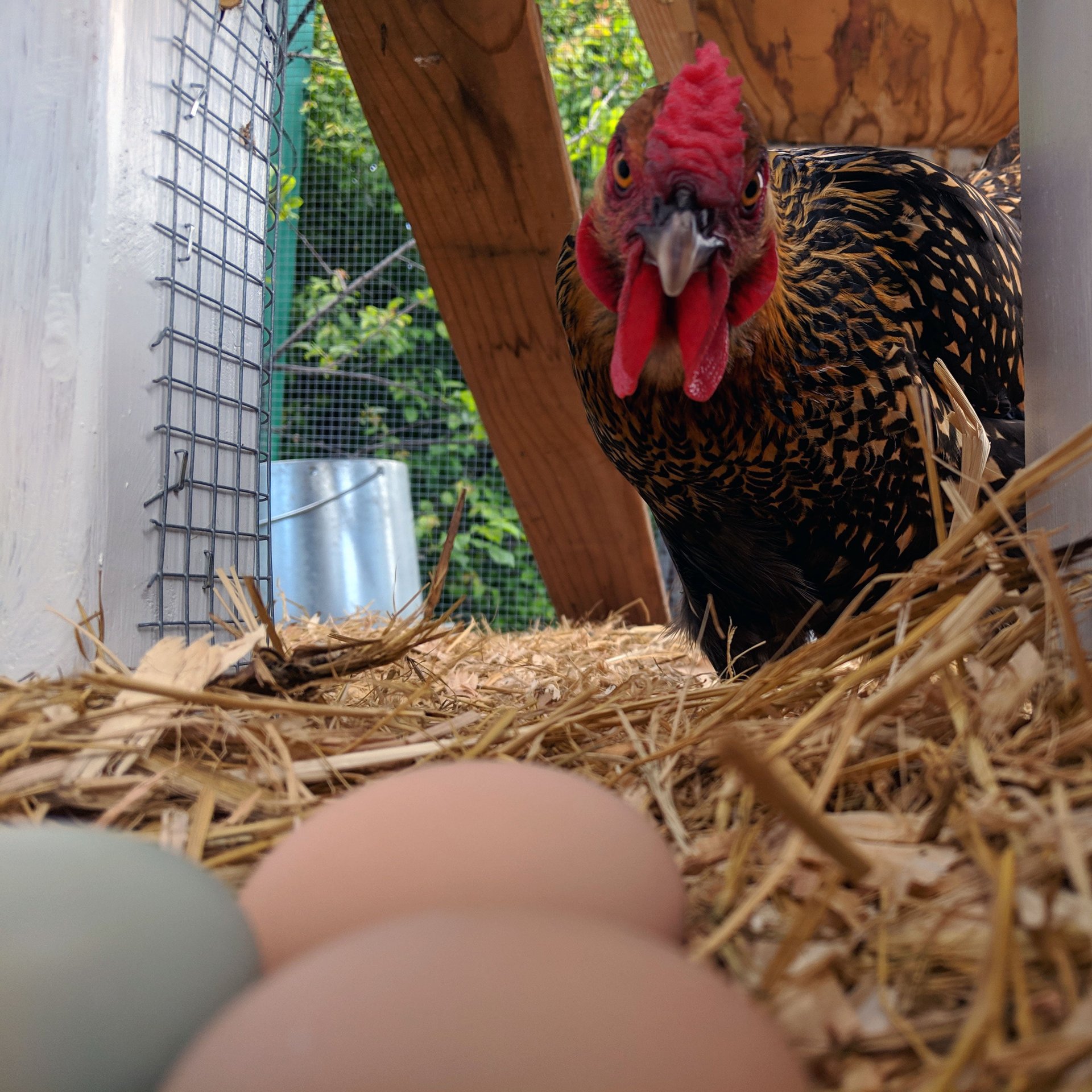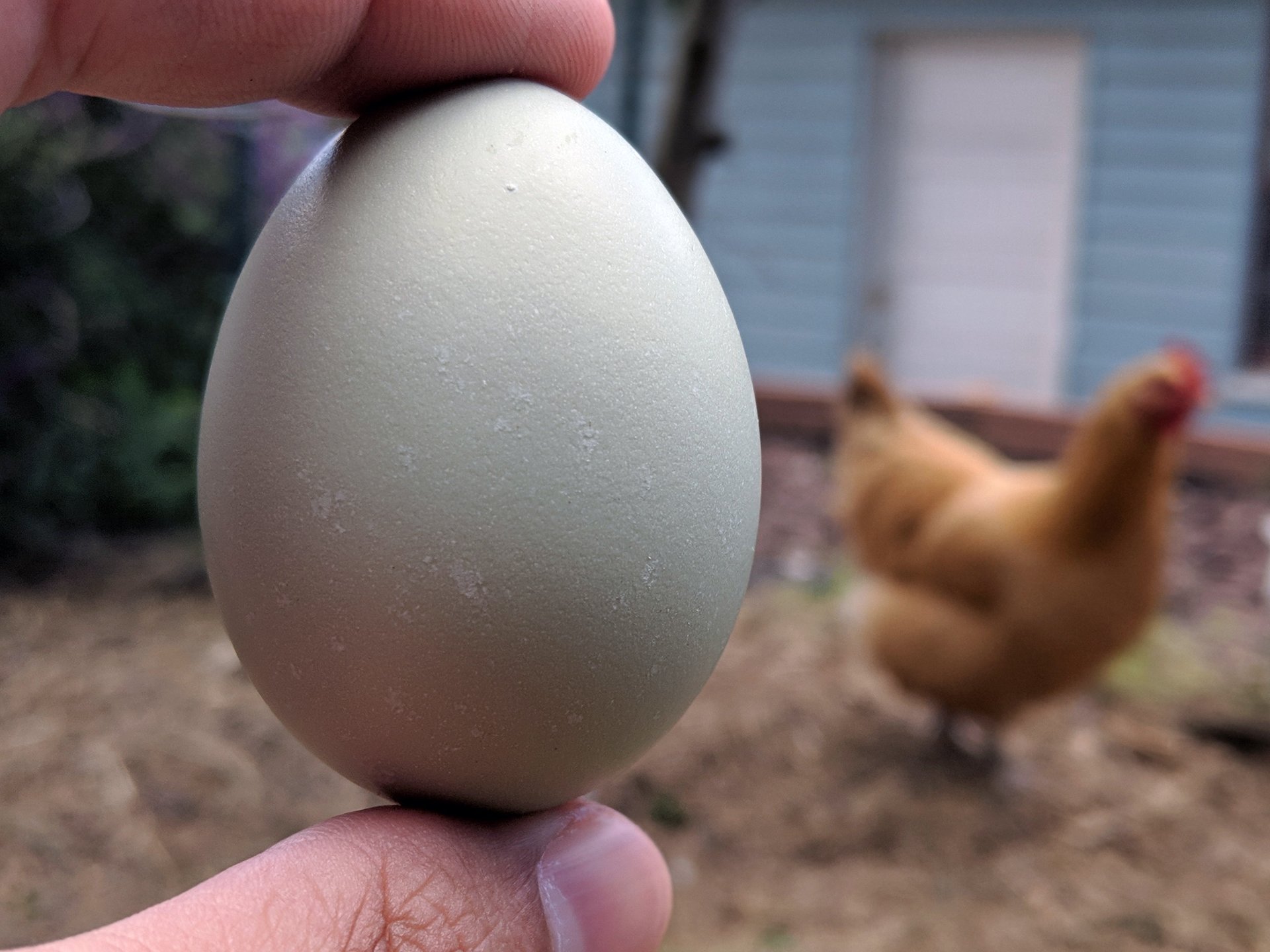Not all Easter eggs need dyeing—some are naturally blue
Some traditions never dye. This year, instead of painting your Easter eggs blue, why not get some that were simply created that way?


Some traditions never dye. This year, instead of painting your Easter eggs blue, why not get some that were simply created that way?
That’s what I’m doing. Like more and more urban areas in the US, Oakland, California, where I live, allows for backyard chicken farming. It’s our family’s second season doing it. On the first day of spring, from one of our newest hen’s tush plopped a spectacularly bluish green egg.

Blue eggs can be seen all over Instagram, especially this week. And it’s no wonder: To someone accustomed to white and brown eggs, these pale teal specimens are striking.
But what makes them blue? Chickens, like dogs and cats, come in many breeds. This is due in part to a long history of domestication. The American breed Ameraucana is known for its blue eggs and reliably produces them. It shares heritage with the South American breed Araucana, which exhibits the same dreamy-colored shells.
Unlike typical inheritance—say, brown hair or blue eyes in humans—these chickens aren’t inheriting DNA containing a gene for blue eggs. Research in 2013 showed these chickens’ genome was edited by an endogenous retrovirus—that’s a virus that inserts it’s own genetic code into the host’s DNA. The result impacts how a chicken’s uterus imparts color on the passing ovum.

Through sequencing the genomes of chickens in China and the Americas that lay blue eggs, researchers determined that these breeds don’t share a common ancestor, but instead are an example of parallel evolution, where two organisms wind up with the same adaptation.
So this Easter, why not celebrate with a little evolutionary biology? Even if you’re not celebrating, crack one of these eggs open. They make for a great Sunday scramble.